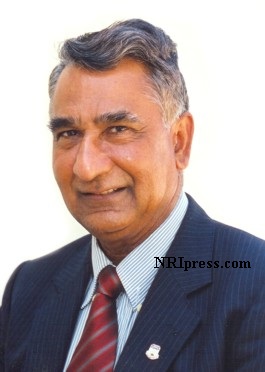| Connecting
over 25 millions NRIs worldwide |
|
|||||||||||||||||||||||
|
||
Vancouver, Sep. 08, 2014 Balwant Sanghera South Asian Community Coalition Against Youth Violence (SACCAYV) has been helping youth and parents for the past several years. In this context, it has worked closely with two post- secondary institutions- Langara College and Kwantlen Polytechnic University- MOSAIC as well as with various other agencies, the police and the Gurdwara leadership. Keeping the youth away from negative influences, violence, drugs, gangs and related activities is a big challenge not only for the parents but also for the community. It has been reported that in BC there are close to 183 gangs, thirty of them major ones. Membership in these gangs is very fluid. Police reports indicate that these gangs are not ethnically based anymore as they were a few years ago. Instead, they are all co-operating with each other with the common objective of making money. It has been reported that the average age of a gang member is about 27. Also, the lifespan of a gang member after joining a gang is approximately three years. Since the 1990s our community alone has lost close to 175 young people to gangs, drugs and violence. Most of them were under 30. Though the community ‘s efforts to stop this carnage have made a difference yet a lot more still needs to be done in this regard. It has to be a continuation of the joint efforts currently under way by various stakeholders including the youth, parents, Indo-Canadian media, police and the community. Youth, in their early years, are most vulnerable. They are likely to be easily attracted towards negative lifestyle. For the adolescents, this is a very challenging time. They usually lack skills in planning, organization, predictive judgement, impulse control, reasoning and reading social cues. The adolescent brain reads emotions using a different part of the brain. As such, they can be easily misled. Consequently, they present a big challenge to their parents and caregivers. In order to keep our youth away from negative influences, the adults in their lives need to be good listeners. They should take keen interest in the youth’s schooling, sports and other extra-curricular activities. The adults in the youth’s life need to accept them unconditionally and clearly convey to them that they value them and love them. They need to provide the youth with a non-judgemental, on-threatening and supportive environment. Parents and care givers must be ready and willing to answer three basic questions from the youth: Who am I? What powers do I have? Where do I fit? Kids are after all kids and need parental guidance though outwardly they may resist it. As parents and caregivers we need to set realistic limits. It becomes easier if they involve the youth in this process. Open communications are extremely important in dealing with the youth. As adults in the youth’s life we must do everything within our means to improve their self-confidence, self-esteem, social skills, sense of belonging and identity. We must recognize that our children/youth are one of our greatest resources and assets. As such, we must make every effort in ensuring that we do everything within our means to help them develop into outstanding productive citizens. Balwant Sanghera
|
||
| |
|
|

